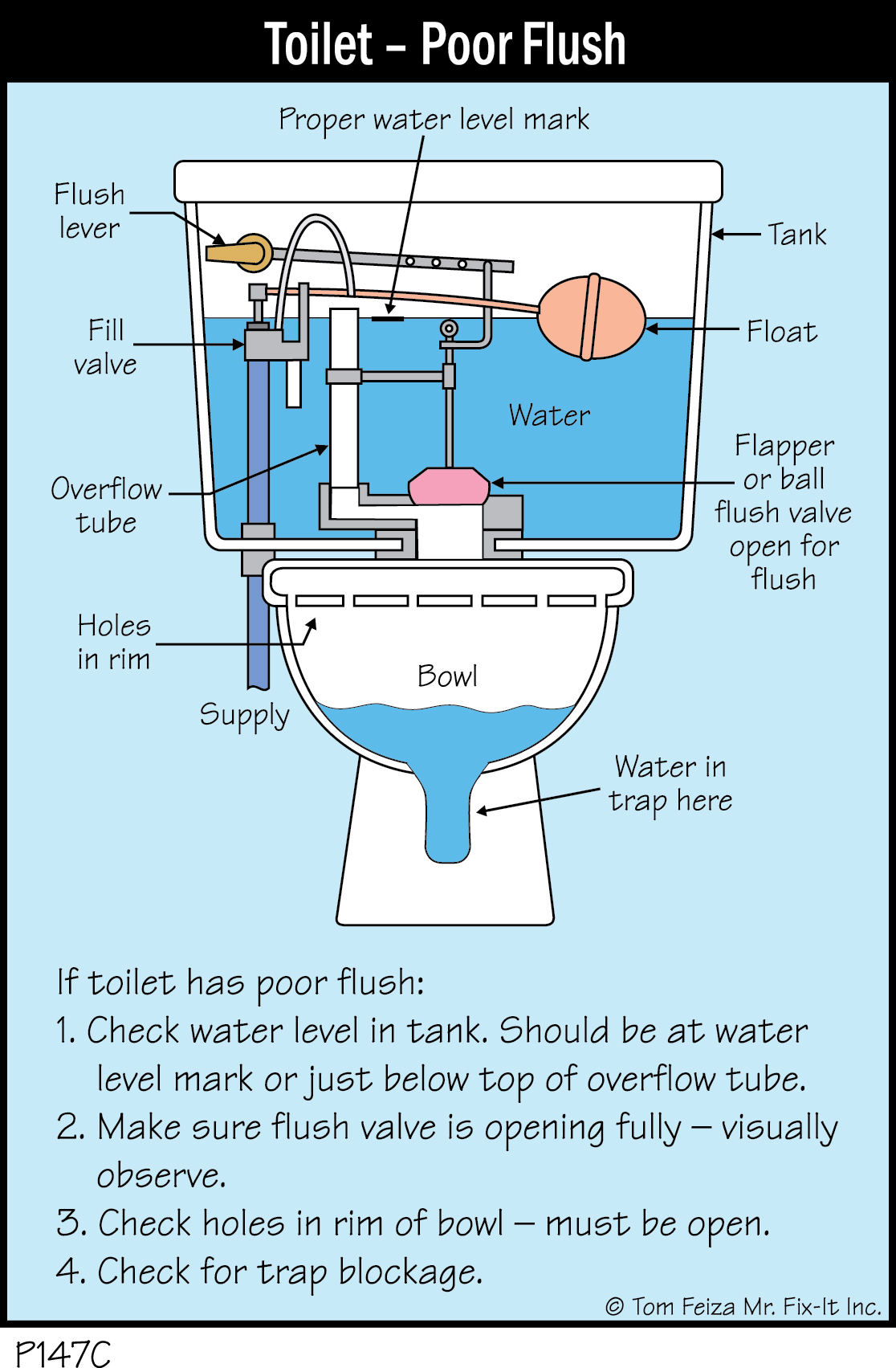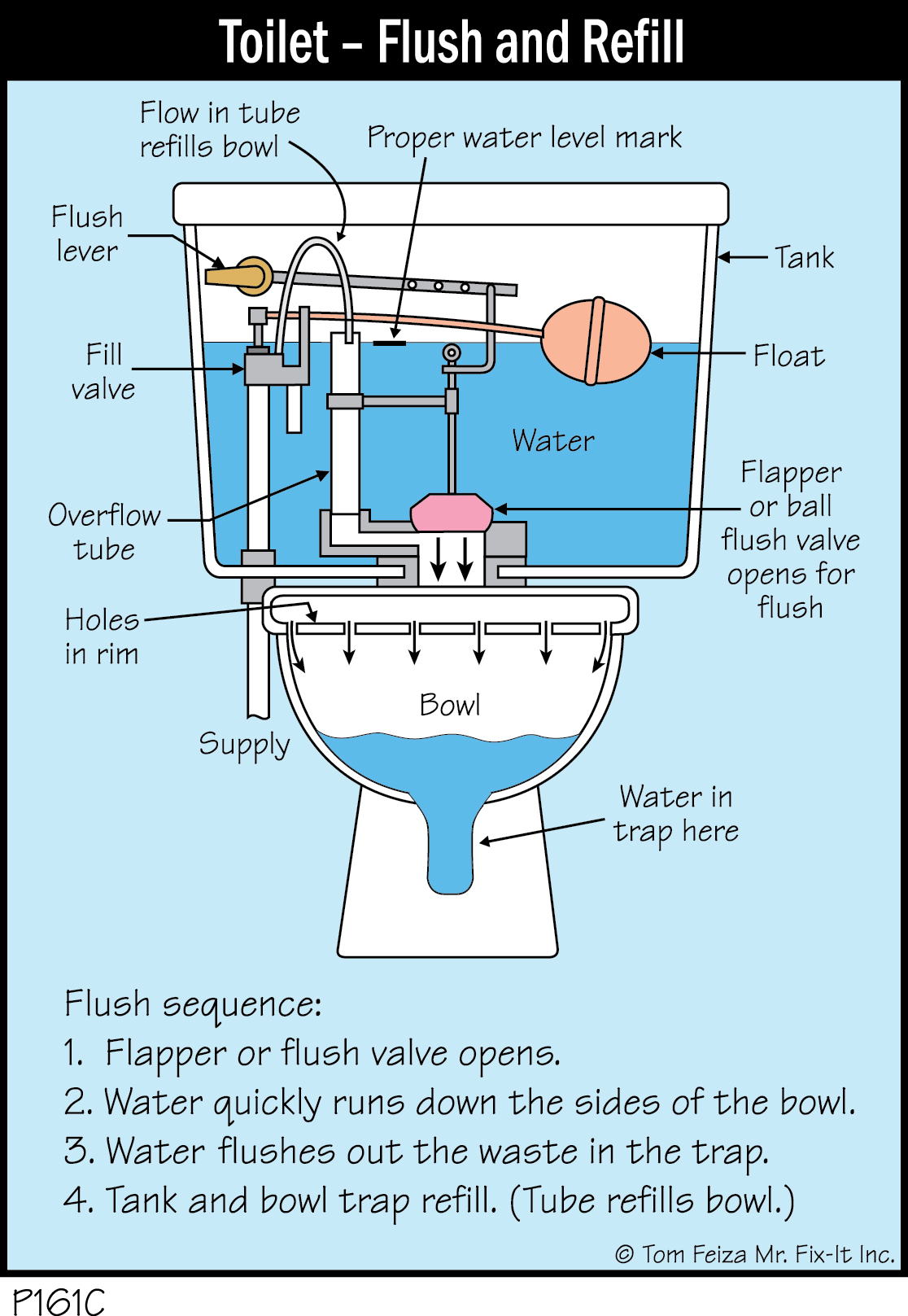A toilet flush starts with a toilet tank full of water – hopefully at the correct water level, just below the top of the overflow tube. When the flush handle is depressed, this lifts and opens the flush valve, which may be a flapper, ball or inverted cup. The flush valve is designed to stay open until most of the water leaves the tank. Then the valve closes.

Water flows from the tank into the porcelain ring/opening around the top of the bowl. Holes in the ring direct water to run down the sides of the bowl. Water fills the trap, creates pressure, and flushes waste and water out of the trap into the drain piping. In older toilets, there may also be a jet tube that directs water into the trap.
After the flush, the trap is refilled as water flows from the fill valve through a small tube into the overflow. At the same time, the fill valve refills the tank. A float in the tank automatically turns off the flow when the water reaches the proper level. Once refilled, the toilet stops using water and is ready for the next flush.


